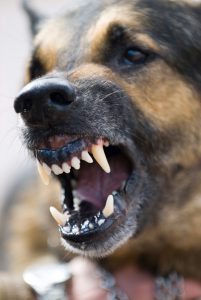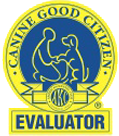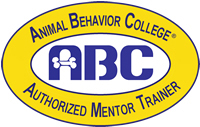This morning a client emailed me, asking if I had a handout on how to walk a reactive dog. With the warmer temperatures and people starting to be outside more, her dog was really struggling with all the stimulation. I’m sure a lot of you can relate to her plight so I thought I would share these tips for walking your reactive dog. Keep in mind, in order to be successful, you need to have a training foundation already. And, above all, be safe!!!!
- Walk him when he’s hungry and take super high value food for rewards and redirecting.
If he has a belly full of kibble and you’re carrying around milkbones from 2002, you are missing out on potential leverage you could have. You want to stack the odds in your favor so your dog has the best chance of succeeding. HUNGRY dog. HIGH VALUE treats. If he’s doing a super job, you want to reinforce that with something awesome. If he’s struggling a little, that pungent liverwurst might sway the balance in your favor and help your dog to get back on track.
- Walk him on a Gentle Leader or Halti head-collar.
Have the right equipment. Again, this should be something your dog has already gotten used to – don’t just throw on a head-collar and hope for the best. Have a strong, light leash 4 feet long. You want one you can wrap up quickly and hold in your hand (so nothing too bulky) but also strong enough to hold your dog. No retractables. If you’re even considering a retractable leash, you are nowhere near ready to be out walking a reactive dog.
- Before heading out, do some focus and emergency hold warm up in the house – don’t take him out if he’s already amped up.
Leaving the comfort of your familiar home and entering the Technicolor explosion of stimuli is a huge transition for your dog. Prepare him. Think of it like you’re going for a run. You need to stretch and warm-up first. If your dog has been snoozing on the couch for an hour, his head is not in the game. Help him by practicing some commands, making sure he’s grounded and connected with you before hitting the pavement.
- Pick times of day and routes that are as quiet as possible.
Your goal is a successful, quiet walk. So, you need to be strategic about when you can go and, yes, this is inconvenient. Google “3am dog walker’s club” and you’ll be surprised with all the stuff about reactive dogs. You might have to get up earlier or drive to a quiet spot. But you can’t overestimate the importance of location, location, location.
- Quality is more important than quantity – better to successfully walk 50 feet than to have a nightmare 2 mile walk.
Sometimes we get so focused on “but he has to get his walk in” that common sense goes out the door. There are a lot of ways to meet your dog’s physical needs that don’t include spinning on the end of a leash as he barks and lunges at whatever it is that’s making him nuts. And you don’t need that type of workout either! So, if you are walking up and down the driveway fifty times and he’s not ready for the street, that’s OK! Quality over quantity.
- Do not walk him with your other dog.
I know you only have so much time and I know it feels unfair to leave one dog behind. But the simple, undeniable truth is that you cannot train and manage your reactive dog well if you have another dog with you. Holding treats, clicker, leash and a potential Tasmanian devil is plenty. Leave your other dog(s) at home.
- Remember your flowchart of behavior.
This is where you need to have put a training foundation on your dog prior to going for walks. If these terms aren’t familiar to you, back up and get a trainer in for some private lessons ASAP. So, remember doggy zen? Reward him for any auto check-ins you get from him. Let him know you’re paying attention and listening to him. If he starts staring or fixating on things, bump up the chart to asking for a Leave It. If he complies, reward. If he doesn’t comply, do a backaway. If he’s quiet and composed in the backaway, reward and proceed. If he’s still having a hard time, do an emergency hold. If he still can’t calm down at that point, abort the walk. This is one flowchart for walking a reactive dog. If you worked with a trainer who used a different system, adjust as needed. The bottom line is you need to have a flowchart and a plan when you go for a walk.
- Be sensitive to trigger stacking. That’s when his stress builds because he is dealing with trigger after trigger after trigger. His ability to listen and do well will fall apart if multiple triggers get stacked.
Did he go to the vet yesterday? Did he flip out earlier that morning when UPS came? Did he hide last night during the thunderstorm? He can’t tell you that he’s had a helluva week and might be too frazzled for a walk. So you need to pay attention to what’s going on for him. When you grab the leash, he’s still going to wag his tail and act like a walk is the best possible thing in the world. But he might be pretty fried on the inside, which means he’s going to have a shorter fuse and less ability to tolerate triggers in the environment. You are his advocate and protector so pay attention.
- Walk with purpose and direction. Keep one eye on him and one on the environment. You will do much better if you are seeing things before he does.
Us reactive dog owners know all about the term ‘hypervigilance’. Sometimes I swear I hear James Bond music in the background as I walk a reactive dog and the owner is pointing out which dog lives in which house, who is on an invisible fence, which house has the kids that come thundering out to pet the puppy, and so on. The more you know about the environment, the better prepared you will be for managing whatever comes up and keeping things successful.
- Regard walks as a training exercise, not an opportunity for him to meander around, sniff, pee on a million things, etc. Be focused, prepared and think of it as work time, not play-time for him.
I know we all wish we had Lassie and could run through the fields without a care in the world. But you don’t have that dog. Maybe you’ll help your dog to reach Lassie status at some point and maybe that will never be an option. Accepting where your dog is RIGHT NOW is what you need to do. Your dog needs help to stay focused and safe when he’s out walking. If you’re mentally checked out, he’s going to take matters into his own paws and we all know how that goes. So, be all business and work that walk!
The last tip I have is to be kind to yourself and your dog. Dealing with reactivity is hard. It’s stressful. It changes your life. Sometimes it holds you hostage and sometimes it feels insurmountable. It does get better with training and management, I promise! Take a deep breath, remind yourself of all the awesome snuggles and good times, and keep on truckin’. Happy spring, everyone!


 Get our monthly newsletter packed full of helpful training tips!
Get our monthly newsletter packed full of helpful training tips! 







Interesting . I feel a little bit more confident just reading this. Thanks for the positive info.